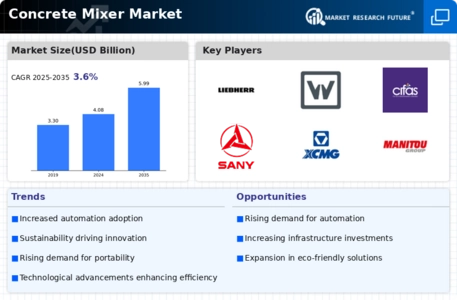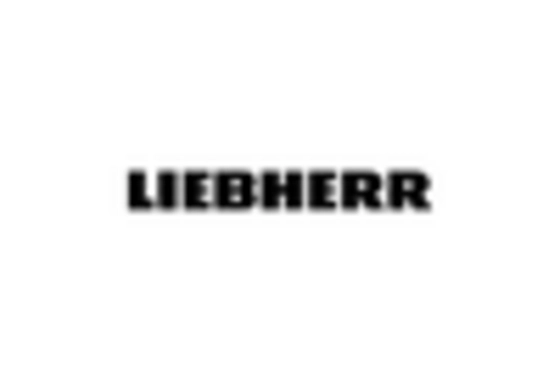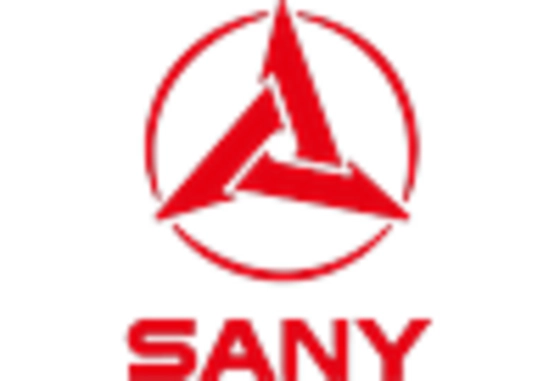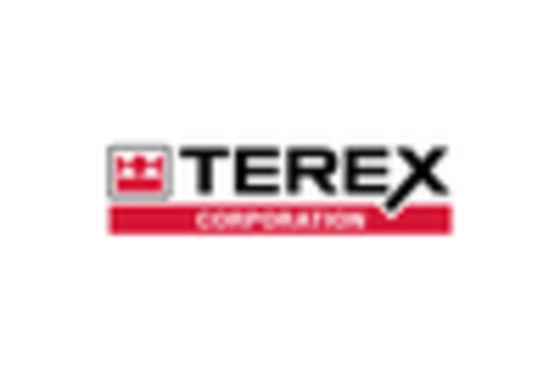Rising Demand for Ready-Mix Concrete
The Concrete Mixer Market is witnessing a notable increase in the demand for ready-mix concrete, which is primarily driven by the convenience and efficiency it offers to construction projects. Ready-mix concrete allows for faster construction timelines and reduces labor costs, making it an attractive option for builders. Recent statistics indicate that the ready-mix concrete segment is expected to grow significantly, with a projected market share increase of around 10% in the coming years. This trend is prompting manufacturers to enhance their concrete mixer technologies to cater to the specific needs of ready-mix concrete production. Consequently, the Concrete Mixer Market is adapting to these changes by developing mixers that can handle varying concrete compositions and improve mixing efficiency.
Increasing Infrastructure Development
The Concrete Mixer Market is experiencing a surge in demand due to the increasing infrastructure development across various regions. Governments and private sectors are investing heavily in construction projects, including roads, bridges, and commercial buildings. This trend is likely to continue, as urbanization and population growth drive the need for enhanced infrastructure. According to recent data, the construction sector is projected to grow at a compound annual growth rate of approximately 5.5% over the next few years. This growth directly correlates with the demand for concrete mixers, as they are essential for efficient concrete mixing and transportation. As a result, manufacturers in the Concrete Mixer Market are focusing on innovation and expanding their product lines to meet the rising demand.
Technological Innovations in Concrete Mixing
Technological innovations are playing a pivotal role in shaping the Concrete Mixer Market. Advancements in automation, digitalization, and smart technologies are enhancing the efficiency and performance of concrete mixers. For instance, the integration of IoT devices allows for real-time monitoring and control of mixing processes, leading to improved quality and consistency of concrete. Furthermore, the introduction of electric and hybrid concrete mixers is gaining traction, aligning with sustainability goals and reducing carbon emissions. As these technologies evolve, they are likely to attract new investments and drive growth within the Concrete Mixer Market. The ongoing research and development efforts are expected to yield more efficient and environmentally friendly mixing solutions.
Focus on Sustainability and Eco-Friendly Solutions
The Concrete Mixer Market is increasingly focusing on sustainability and eco-friendly solutions in response to growing environmental concerns. The construction sector is under pressure to reduce its carbon footprint, leading to a demand for mixers that utilize sustainable materials and energy-efficient technologies. Innovations such as electric concrete mixers and those designed for recycling concrete waste are gaining popularity. Recent studies suggest that the market for eco-friendly concrete solutions is expected to expand significantly, with a projected growth rate of around 8% over the next few years. This shift towards sustainability is prompting manufacturers in the Concrete Mixer Market to invest in research and development to create products that align with environmental regulations and consumer preferences.
Growth of the Construction Equipment Rental Market
The Concrete Mixer Market is benefiting from the growth of the construction equipment rental market. As construction companies seek to minimize capital expenditures, many are opting to rent equipment rather than purchase it outright. This trend is particularly evident in emerging markets, where the construction sector is expanding rapidly. The rental market for concrete mixers is projected to grow at a rate of approximately 7% annually, driven by the increasing number of small to medium-sized construction projects. This shift is encouraging manufacturers to develop rental-friendly models that are cost-effective and easy to operate. Consequently, the Concrete Mixer Market is adapting to this trend by offering a range of mixers that cater to the needs of rental companies and their clients.


















Leave a Comment